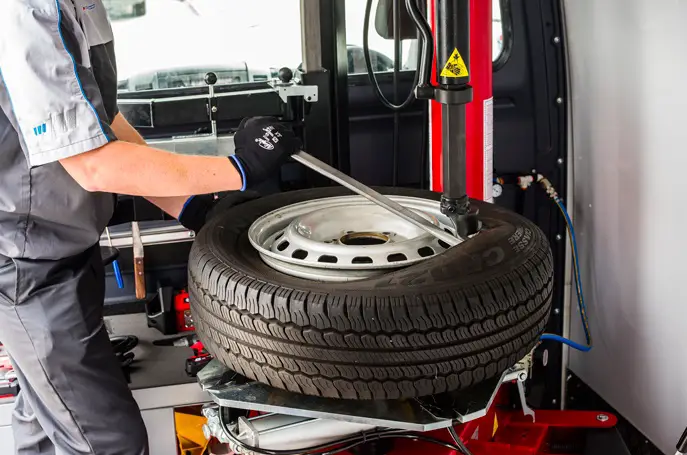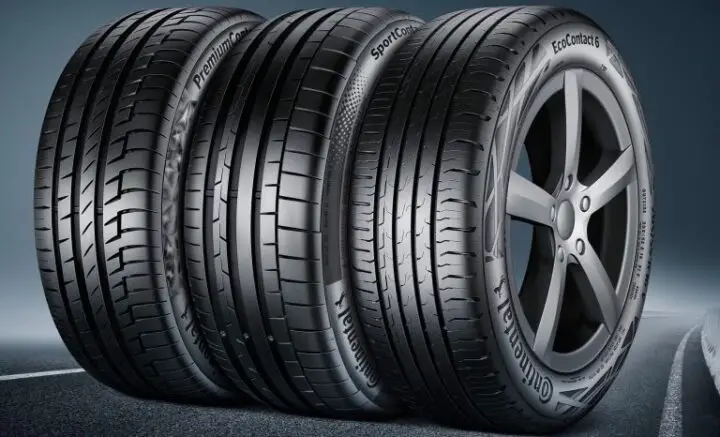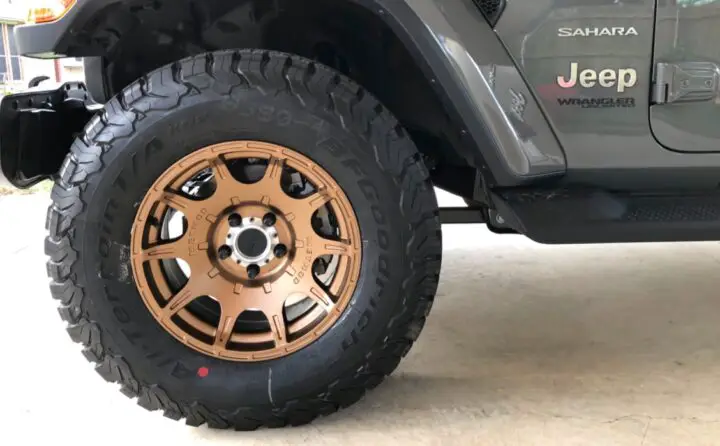If you are buying new tires, or if you found a deal on some ties that don’t exactly fit your wheels, you may be able to get away with buying a different set than your originals. As long as you stay within certain measurements, mount the same sized radius tire and wheel, and put the same sized wheels on each size, you will be completely fine.
There are reasons to change your tire size, but as long as they are close, go for it! I’ll break down certain things you absolutely cannot change when buying different-sized tires to mount on your stock vehicle wheels. I love shopping for new tires with new rims, but new tires and different rims can be done. So where do we start?

Table of Contents
Do I Have To Get New Tires With New Rims?
If your stock 16-inch wheels still have a lot of tread on the mand you want to buy some larger rims, you will have to get new tires as well. If your tire size is 265/65R16 and you buy some 19-inch rims, too bad so sad, you will have to buy new tires as well. You will have to buy 19-inch tires.
This is the most crucial measurement when matching up tires and wheels. The last number “16” is the diameter of the wheel that sits on the wheel. So match this number up with the wheel and the tire and you will be 90% on your way to selecting the right tires.
How Much Does It Cost To Have New Rims Installed?
If you already purchased the tires and wheels you will only have to pay for the tire mounting and alignment. This should not cost you too much. But expect to pay at least $20 per tire or more at a chain. At your local auto shop, they may be able to mount the tires but they won’t be able to align them once they are mounted to your vehicle. So ask if they can do both, otherwise, they will have someone close by, or even next door, that can align your tires.
Alignment is crucial. If you are spending over a grand on new tires with new rims, don’t be cheap and skip tire alignment. Driving can be dangerous and very uncomfortable. Get it done and have one fewer thing to worry about.
If you bring your already purchased new rims to the tire shop and they are selling you new tires, you will have the option to negotiate a cheaper setup fee. They may even throw in mounting and alignment if you purchase a new set of four tires. These are standard procedures when purchasing new tires, anyway, so it wouldn’t be extra work when you bring your own new flashy rims.
Do They Check Alignment When You Get New Tires?
It is up to the auto shop if they check and adjust the alignment when you get new tires and new rims. You must request it if they do not offer it. Smaller shops will not automatically include it but nationwide chains will more often than not they will include it in the price of the tire.
When they do offer it make sure they actually do it. Tire alignment can be a great upgrade, but a lot of places claim it comes included with the purchase of a set of tires, but their tire alignment may be a quick once over when they mount the tire onto the wheel. A proper tire alignment will be a separate process once the tires are mounted on the wheel and installed on the vehicle.
They will drive your car to a big machine and do a bunch of busy operations. Then when your perfectly aligned frame leaves the shop, your car will drive true. If your car is not driving straight you may have suspension issues. If you are sure there is nothing wrong structurally with your vehicle, do a quick lap and bring the car back and have them realign the tires. They will redo the alignment until your car drives straight.
Pro Tip: If they give you a hard time about redoing the alignment, raise your voice and make sure other potential customers can listen to your frustration. Not getting your money’s worth will make others second guess purchasing at their shop. The manager will be quick to make you happy and shut the heck up.
Can I Put Wider Tires On My Stock Rims?
Yes, you can wider or narrower tires on your stock rims. If you have stock tires that measure 260/65R16 you have some wiggle room. So you can change the first number, 260, more or less about 20 units. This measurement is in millimeters. So you will want to buy tire sizes from 240/65R16 to 280/65R16.
You will not have too much of an issue if you stay within these limits. If you do stray from these limits you may have issues with your suspension, alignment, or steering. If you are not doing much off-roading a much wider tire will not give you a lot of benefits.

Can You Put Different Size Tires On The Same Rim?
Yes, you can put different size tires on the same car rim as long as the rim size and the width are the same sizes. You can change the type of tire and the height as much as you like as long as you don’t buy a tire that is too big for your vehicle!
So, for example, suppose you have a tire size P260/65R15. You can buy sizes that vary as such: LT260/60R15 or P260/60R15.
These are all compatible because:
- The first number 260, the tire width, is the same
- The second number 65, the tire aspect ratio is not severely affected by wheel size.
- P or LT are almost interchangeable. Passenger vehicle and Light Truck tires have some differences but in a bind either can perform for mild road conditions.
If you put a P260/65R16 tire on a 16-inch rim you’re going to have a bad time. The last number in the tire code is the actual size of the wheel. Wheels have two sizes, radius (R) and width. The radius is very limiting. You cannot interchange 15-inch and 16-inch tires on each other’s wheels respectively. 16-inch rims ONLY fit on 16-inch tires.
If you have a line on a deal where you may pimp up your car with some different-sized rims, make sure they fit your vehicle! You won’t look very cool if your flashy rims are sitting in your garage when you are saving up to buy the $225 priced tires. Check and double-check your manufacturer’s stock tire sizes and don’t stray too far. Especially with wheel well.


